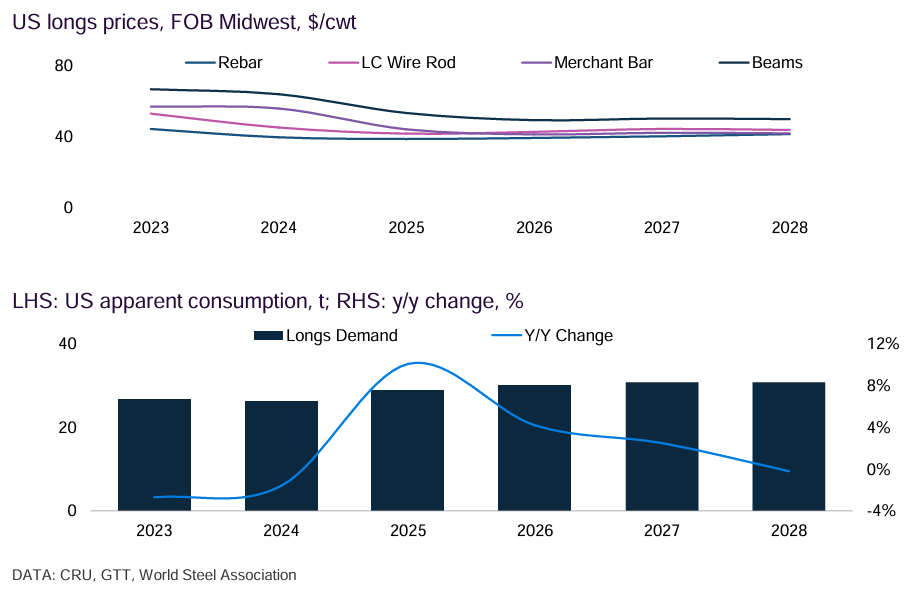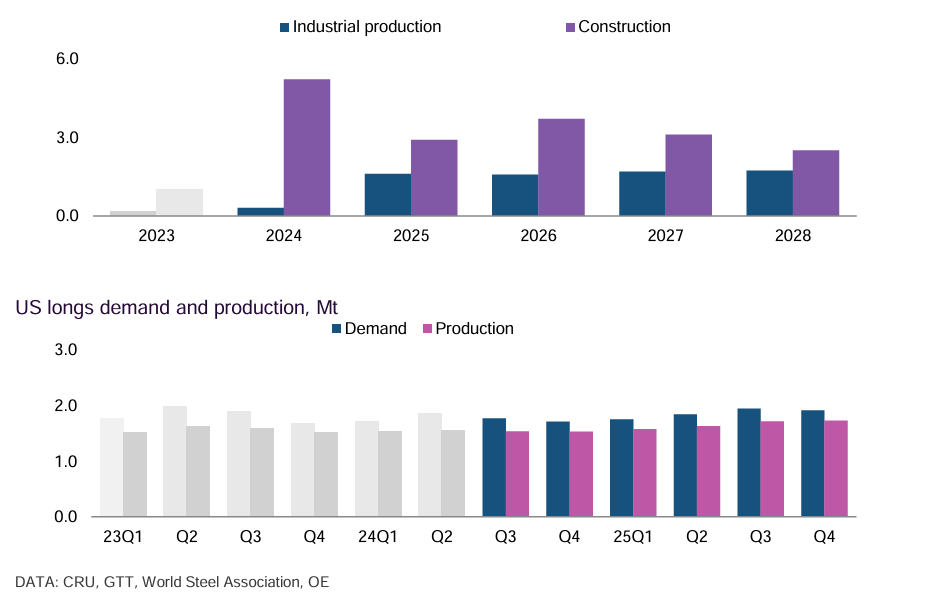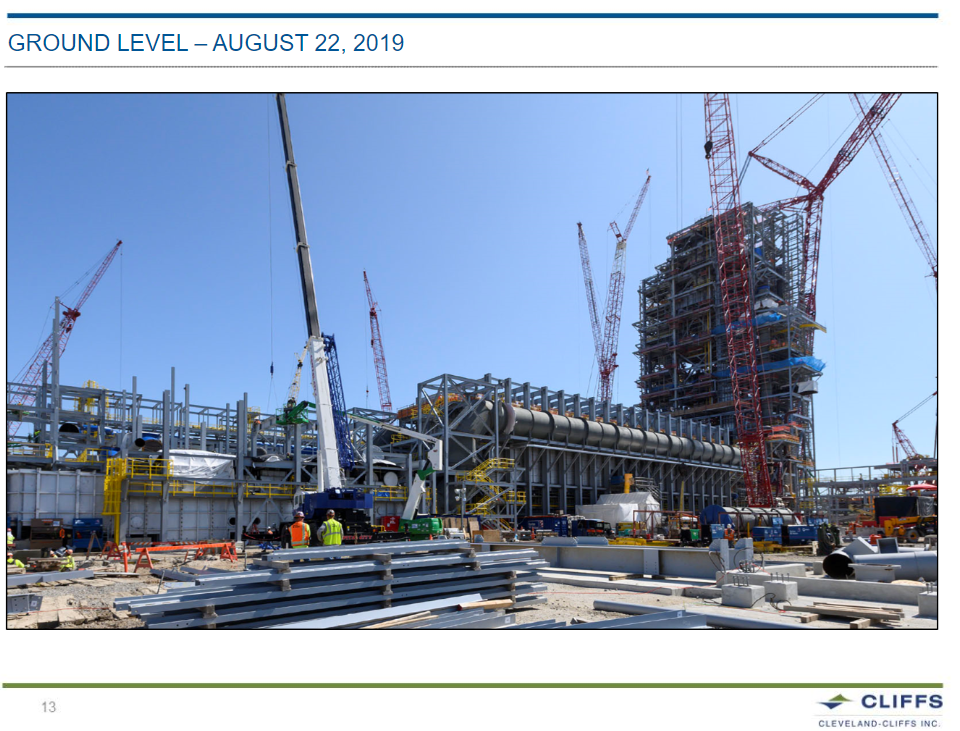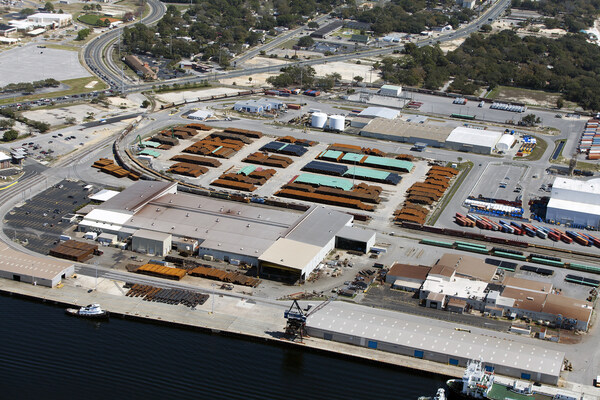Infrastructure

Steel sector waits on demand from infrastructure bill
Written by Stephanie Ritenbaugh
November 20, 2024
Three years after President Biden signed into law the $1.2-trillion Bipartisan Infrastructure Bill, the steel sector has been banking on the demand generated from projects to improve bridges, ports, rail, airports, and more.
So far, nearly $570 billion in funding has been announced for over 66,000 projects and awards.
Still, it’s taken time for those effects to take hold, as projects can take years to get through the approvals process before ground is broken. Most of the impact from the bill will likely be seen next year, sources say
“It’s taking between one to three years to go through the entire process,” Alexandra Anderson, senior analyst for CRU, told SMU. “So there’s going to be a pretty long tail on some of these projects that have been in planning and budgeting and the like.”
Many expected to see things ramp up sooner, even in 2022 and 2023.
“That just hasn’t happened,” Anderson said. “We were anticipating at the end of last year and the second half of this year we were going to start to see some activity, and now it’s looking like the second half of next year.”
In its most recent outlook on steel longs (done before the outcome of the US presidential election was known), CRU wrote:
“Demand from government infrastructure projects will boost longs consumption, with most growth occurring in 2025–26, especially as uncertainty regarding the 2024 [US presidential] elections has slowed demand heading into Q4. While continued recovery in key end-use sectors will keep the market bolstered through 2028, prices will settle below the highs seen in recent years.”

“Seasonally low demand, as well as uncertainty around the upcoming presidential elections, will keep longs under pressure for the rest of 2024. However, 2025 will bring renewed activity alongside continued economic recovery. At the same time, domestic production will gradually rise as new longs capacity comes online,” CRU continued.

In a recent third-quarter earnings call, Leon Topalian, chair, president, and CEO of Nucor noted that construction related to semiconductor factories, advanced manufacturing facilities, data centers, and institutional buildings is strong. But the company, like many others, is looking to 2025 for demand to pick up.
“And while we recognize that new infrastructure spending has been less deal-intensive than originally expected, we do still expect to generate incremental demand in the years ahead,” the head of the Charlotte, N.C.-based steelmaking and manufacturing conglomerate said.

Stephanie Ritenbaugh
Read more from Stephanie RitenbaughLatest in Infrastructure

Construction spending drops marginally in January
Construction spending edged down slightly in January, slipping for the first time in four months. The US Census Bureau estimated spending at a seasonally adjusted annual rate of $2,196 billion in January, down 0.2% from December’s downward revised rate. The January figure is 3.3% higher than a year ago. January’s result, despite the slight erosion, […]

Buy America waivers end for federal highway projects
All steel, iron, and manufactured products used in federally funded highway projects must soon be made in America. The Department of Transportation announced all waivers to the Buy America requirements for federal infrastructure projects will soon be terminated. Effective March 17, the DOT’s Federal Highway Administration will implement a final rule that will end its […]

Contractors concerned about tariffs, immigration in 2025: AGC survey
AGC said Trump should be “sparing” in imposing new tariffs and exclude products needed for domestic manufacturing, energy and infrastructure.

Borusan plans $68M upgrade to Florida facilities
The announcement comes a little more than a year after Borusan acquired Panama City, Fla.-based Berg Pipe for $162 million.

Steady architecture billings signal improving conditions
The November ABI decreased month over month but was still the third-highest reading of the past two years.
